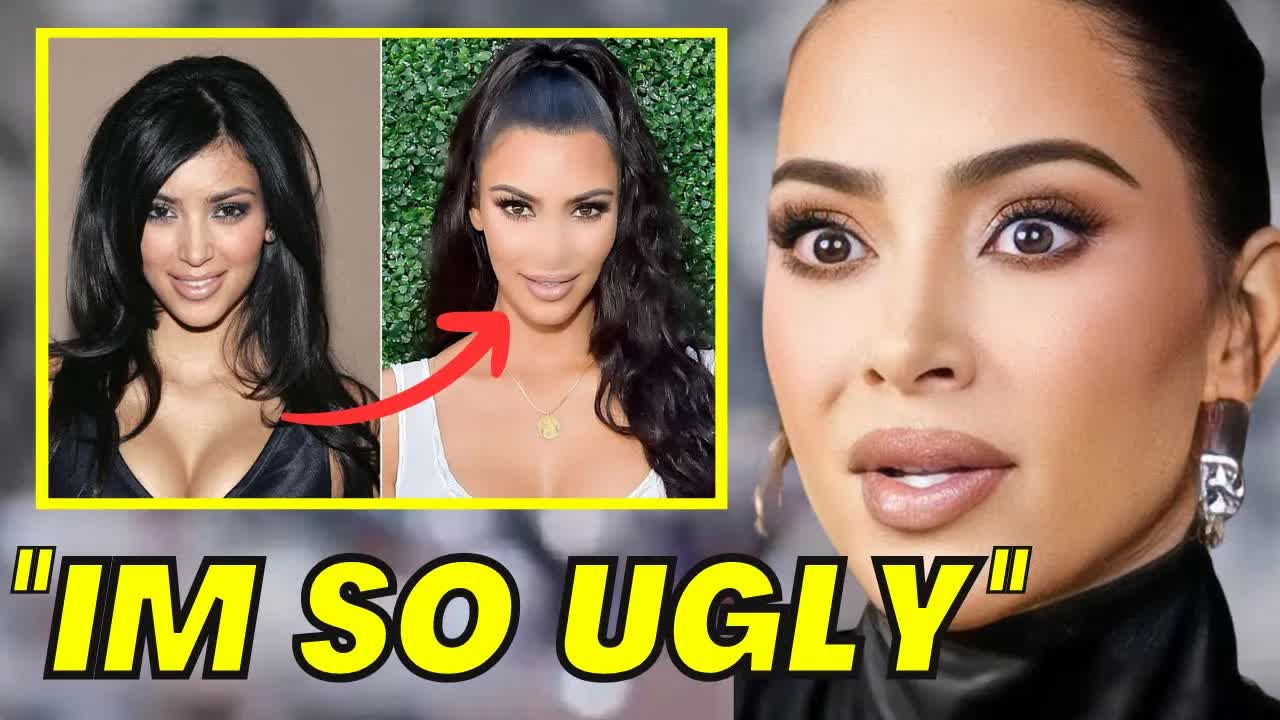Kim Kardashian, a name synonymous with glamour and controversy, is once again at the center of a heated discussion surrounding beauty standards and cosmetic procedures.
While she often makes headlines for her fashion choices and family dynamics, the conversation has recently shifted to the potentially harmful effects of the many surgeries she's undergone.
As public scrutiny intensifies, many are questioning the influence of the Kardashian-Jenner clan on societal perceptions of beauty.
The latest buzz revolves around Kylie Jenner, whose recent appearance has sparked debates about her numerous cosmetic enhancements.
Observers have noted that Kylie's face seems to be suffering from the consequences of excessive procedures.
However, it seems Kim is not far behind in this conversation.
Rumors are swirling that her latest nose job may not have gone as intended, leading to speculation about her current look, which many fans find alarming.
It's important to note that Kim and Kylie aren't the only members of their family to have altered their appearances through cosmetic surgery.
Several relatives have also embraced procedures, raising concerns about the unhealthy beauty ideals being promoted by these high-profile figures.
Fans are increasingly influenced by these unattainable standards, often overlooking the potential health risks that accompany such transformations.
This brings us to a crucial question: How much alteration is acceptable when it comes to enhancing one's appearance?
And should everyday individuals feel pressured to emulate celebrity looks?
These are the issues at the forefront of today's discussion, as we delve deeper into the world of cosmetic enhancements within the Kardashian-Jenner family.
Looking back, Kim's journey into the realm of cosmetic surgery began under troubling circumstances.
Allegedly, her first husband, Damon Thomas, pushed her into undergoing plastic surgery to fit his ideal of beauty.
He reportedly financed various procedures, including liposuction, which left a lasting impact on Kim's self-image.
Following their divorce, Kim developed an obsession with perfection, a pursuit that seems to have intensified over the years.
At 43, Kim continues to deny using fillers, despite evidence suggesting otherwise.
In an interview with Allure magazine, she claimed to only use Botox and refuted any allegations of having fillers.
This denial has disappointed many fans who look up to her, as they feel misled by her portrayal of beauty.
Kim's reluctance to acknowledge her surgical history raises ethical questions about the influence she wields over her followers.
Interestingly, Kim once shared an unedited photo with her daughter that revealed her surgical scars, sparking speculation about her past procedures.
The image showcased signs of an upper lip lift and other modifications commonly associated with rhinoplasty.
Despite the public's growing awareness of her extensive beauty regimen—rumored to cost around $100,000 annually—Kim often attributes her looks to non-surgical methods and makeup skills.
As discussions about Kim's appearance evolve, many are analyzing the implications of her choices.
Critics point out that her drastic transformation over the years reflects a broader trend among celebrities who promote unrealistic beauty standards.
While Kim has publicly criticized her sister Khloe for her use of fillers, she has yet to come clean about her own cosmetic enhancements, leading to skepticism among fans.
The obsession with achieving a Kardashian-like appearance has led to troubling trends, particularly among young women.
Social media challenges, like the Kylie Jenner lip challenge, have encouraged individuals to undergo risky procedures in pursuit of an idealized look.
The normalization of cosmetic surgery, especially among teenagers, raises alarms about the long-term psychological and physical repercussions.
Amidst this chaos, stories of individuals striving to resemble Kim Kardashian emerge.
One woman, Sherri Lee, spent significant sums on surgeries to achieve what she deemed the “perfect” look.
Such comparisons can foster feelings of inadequacy and low self-esteem, especially as celebrities continue to set unattainable beauty benchmarks.
The pressure to conform can lead to serious mental health issues, including body dysmorphia and eating disorders.
The implications of this obsession extend beyond mere aesthetics.
Reports indicate a dramatic increase in procedures such as b*tt augmentations, reflecting society's fixation on curvy figures reminiscent of the Kardashian physique.
Many individuals ignore the risks associated with these surgeries, often regretting their decisions once the irreversible changes take place.
As the conversation around beauty standards and cosmetic procedures continues, it's vital to consider the role of celebrities in shaping societal norms.
Kim Kardashian, along with her family, wields considerable influence, promoting products that align with their curated images.
However, this also raises ethical concerns about the pressure placed on younger generations to alter their appearances in pursuit of an ideal that may not align with their natural selves.
While some fans view Kim as a trailblazer who empowers them to embrace their bodies, others criticize her for perpetuating unrealistic beauty ideals.
The divide in public opinion highlights the complex relationship between celebrity culture and individual self-worth.
Ultimately, the quest for beauty should celebrate diversity and authenticity rather than conformity to narrow standards.
As we navigate this landscape of beauty and self-acceptance, it's essential to reflect on how we define attractiveness.
Should celebrities be more transparent about their cosmetic journeys?
And how can society shift towards embracing a broader range of beauty representations?
These questions remain critical as we explore the impact of celebrity influence on our perceptions of self-worth and individuality.































